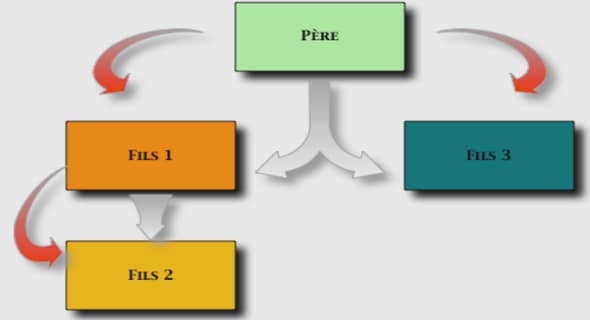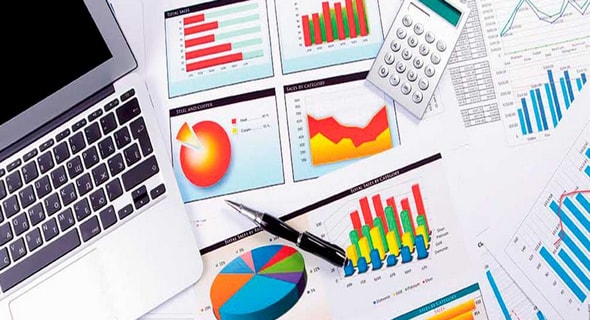Surveying the Terrain of Computer Mediated Communication
An Information Age
In his work, Warschauer (1999) describes The Information Age as an era which is shaped by a ‘new’ industrial revolution.
‘Whereas the first industrial revolution was based on the harnessing of steam power,the newest industrial revolution is based on the harnessing of information, knowledge, and networks. This information-based revolution, which began in the post-war period and is accelerating today, is viewed by many as bringing about a new postmodern world based on radically different production methods and accompanying changes in lifestyle.’ (Warschauer, 1999: 9)
As we look toward the 21st century, the most important development affecting human life at different levels is the « information superhighway » . According to predictions, the « information superhighway » will transform the world into a global village. The communication revolution will lead to “[t]he death of distance » (Cairncross, 1997). Dorion (2003) explains: « La mondialisation et les technologies de l’information et des communications (TIC) sont de plus en plus perçues comme inséparables. En réalité, la mondialisation serait en grande partie redevable aux TIC, car elle est, de prime abord, un phénomène économique d’internationalisation des échanges (Vidal, 1997 : 16). » (Dorion, 2003: )
Undoubtedly, the Internet has made the biggest impact in the last few years as it provides instant access to information anywhere in the world and, moreover, allows many different people to access the same piece of information at the same time (Hockey, 2004: 1). Levine & Scollon (2004) explain: “Now we are seeing the proliferation of communication technologies from palm-sized digital video recorders to cell phones and chat rooms on the Internet. Journals are going online, and theses are being transmitted in multimedia formats.” (Levine & Scollon, 2004: 1)
Ryan et al., (2000) further add:
“Digital computers have been around for some 50 years. Their influence has been felt in fits and starts. Early significant applications were in science, engineering and mathematics. In the last 20 years we have seen computing become relatively universal with stand-alone PCs and workstations commonplace in homes, offices and factories. Both computational power and data storage capacity have become relatively cheap. Powerful application packages for word-processing, numerical processing and graphical work are readily available. Data of all kinds can now be represented and manipulated digitally, including photographs, video and audio tracks. Increasingly all of this is possible not just on stand-alone computers but over networks and in particular the Internet.” (Ryan et al., 2000: 9)
So, what is Internet then?
The Internet: A definition
In his book- A Brief History of the Future: The Origins of the Internet- Naughton (1991) comments: ‘The Internet is one of the most remarkable things human beings have ever made. In terms of its impact on society, it ranks with print, the railways, the telegraph, the automobile, electric power and television. Some would equate it with print and television, the two earlier technologies which most transformed the communication environment in which people live. Yet it is potentially more powerful than both because it harnesses the intellectual leverage which print gave to mankind without being hobbled by the one-to-many nature of broadcast television.’ (Naughton, 1991: 21-2)
We should not deny the impact Internet is having on life, society and most importantly language. However, in order ‘to get through it’ , it is important to experience a defining process for a better understanding of the ‘network of networks’. Here, we borrow from the former Federal Networking Council’s (1995) definition, which includes three primary elements:
• The Internet is linked together through a global address system.
• The Internet uses a common form of transmission protocol.
• The Internet allows public and private communication.
The Free Online Dictionary of Computing , on the other hand, provides a more technical definition of the technology: “The Internet is best characterized as « the biggest network of computer networks on earth. » A computer network is a data communications system made up of hardware and software that transmits data from one computer to another. In part, a computer network includes physical infrastructure like wires, cables, fiber optic lines, undersea cables, and satellites. The other part of a network is the software to keep it running. Computer networks can connect to other computer networks to get an even bigger computer network. The Internet is a set of connected computer networks.”
The Starting Point
Internet starting point can be traced to the late1960s in the Unites States of America during which Internet was exploited as an experimental network which quickly grew to include a variety of fields namely defense , university, business, and later on personal usage . It is now the largest computer network that is “ providing an increasing range of services and enabling unprecedented numbers of people to be in touch with each other through electronic-mail (e-mail ), discussion groups, and the provision of digital ‘pages’ on any topic.” Crystal (2001: 2) .
General Introduction |


